Learning how to play guitar for beginners can be a daunting task, but there are positive steps you can take to learn how to play guitar that can make the process easier. One of the best ways to learn to play guitar for beginners is to start at the beginning, learning the basics of guitar first.
In this lesson, we will focus on learning guitar for beginners, starting from zero. If you’ve never played guitar in your life, we will show you how to take it step by step. A step by step approach to playing guitar is the best way to approach guitar lessons for beginners, so it’s important that you follow the steps outlined here.
Learn each of the steps before you try to go on to the next one. This will help ensure you learn to play guitar in an effective manner with the next ones. All right, let’s get started.

Guitar Parts: Beginner Breakdown
Our first step will be learning the guitar parts. This may not seem important, but it really is, so let´s take a look at the pictures:
Acoustic Guitar
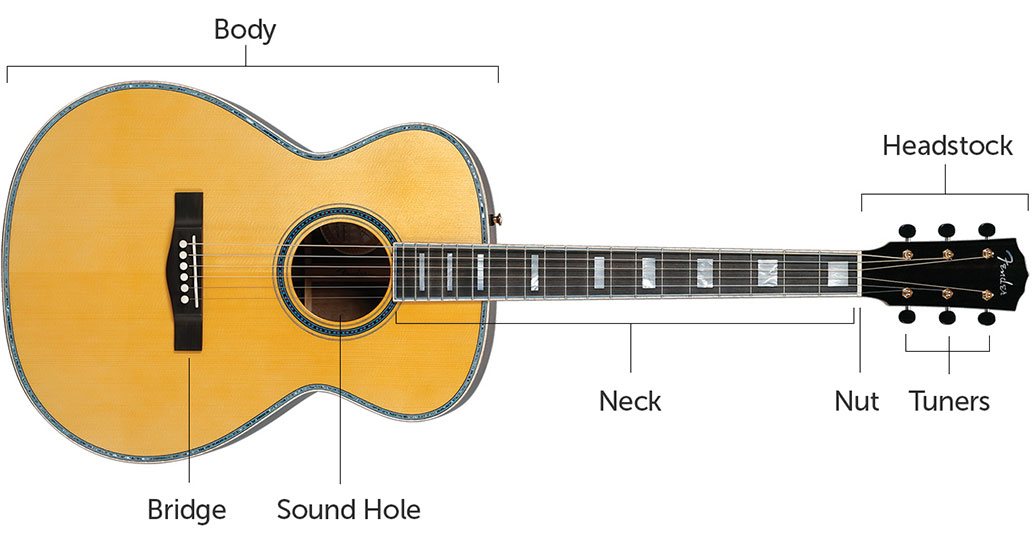
Electric Guitar
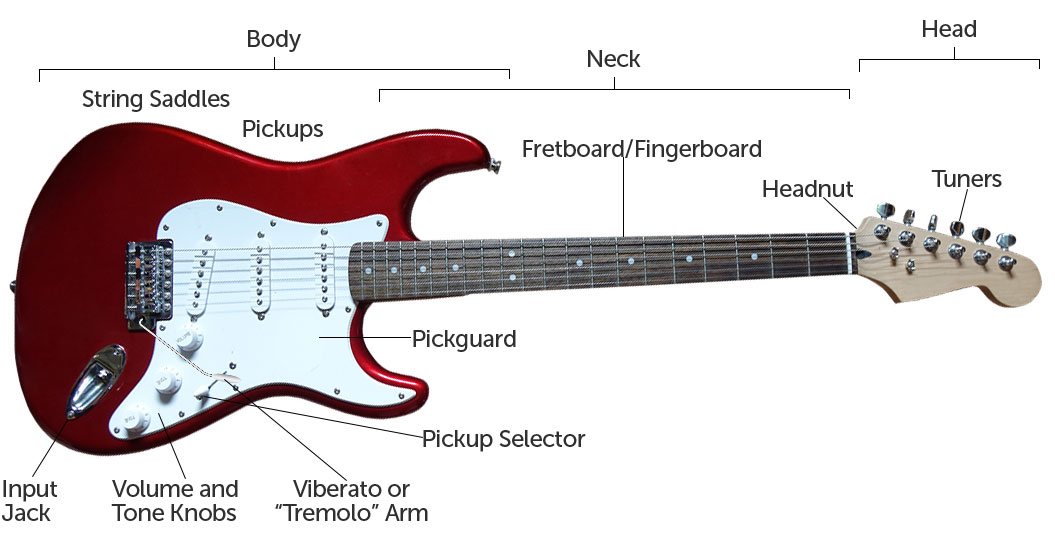 As you can see, a guitar has 3 main parts: body, neck, and head.
As you can see, a guitar has 3 main parts: body, neck, and head.Also, although they work differently as far as producing sound goes, there are a lot of parts in common between acoustic and electric guitars. Let’s examine the different pieces we can find in each part.
Tuners or Tuning Machines: These are common in all stringed instruments but can slightly different. They are used to tune the instrument. Turning the keys one way will lower the tone of the string and turning it the other way will raise the tone.
Headnut or Nut: These are a small piece of hard material where each of the strings rest by settling into the space between them, helping to keep the strings in the appropriate place.
Fretboard: The fretboard can be made of many different woods. The frets are the metal pieces that divide the fingerboard into different notes. The fingerboard can be made from different types of wood as well.
Sound Hole: As the name indicates, this is a hole found on various acoustic instruments. This hole helps produce the sound.
Bridge: This is the device that supports the strings on the stock of the body. There are many different kinds of bridges, depending on models and types of guitar.
String Saddles: This is the little metal piece of electric guitar bridges where the strings rest.
Pickups: This is a sensor that captures the vibration of the strings, converting them to an electrical signal that is amplified by a guitar amplifier or amp. There are tons of different kinds of pickups, depending on guitar models, music styles, budget, etc.
Vibrato or Tremolo Arm: There are a lot of different vibrato systems for electric guitars. This is used to add vibrato to the notes by changing the tension of the strings.
Volume and Tone Knobs: As the name indicates, these are the knobs to control guitar volume and tone.
Input Jack: This is where we plug the guitar cable to the amp
Pickguard: This is a piece of plastic that some guitars have on the body to protect the guitar finish. They are pretty common in standard stratocaster guitars like Fender.
Pickup Selector: Usually, an electric guitar has at least 2 pickups. As the name indicates, this is for selecting the desired pickup while we are playing guitar.
Guitar String Names
It´s very important to know the name of the strings (the notes they represent). The string names are the same on electric and acoustic guitars.
The thinnest note is the 1st string: high E
2nd string: B
3rd string: G
4th string: D
5th string: A
6th string: low E
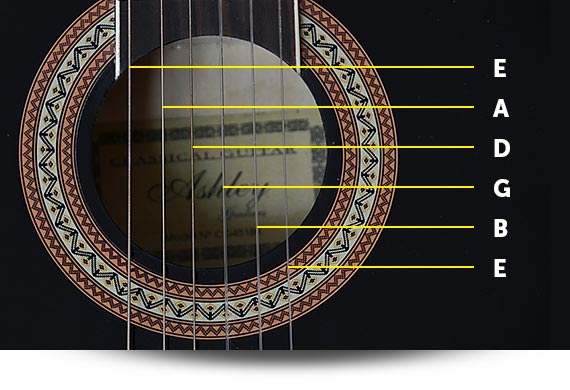
Once you know the names of the strings, the next step is to learn some basic chords. Knowing how to play chords is essential. There are many songs you can begin playing as a beginner guitar player once you have learned even three basic chords. This is why learning how to play the guitar for beginners is such an important part of beginning guitar lessons.
Basic Open Chords for Beginners
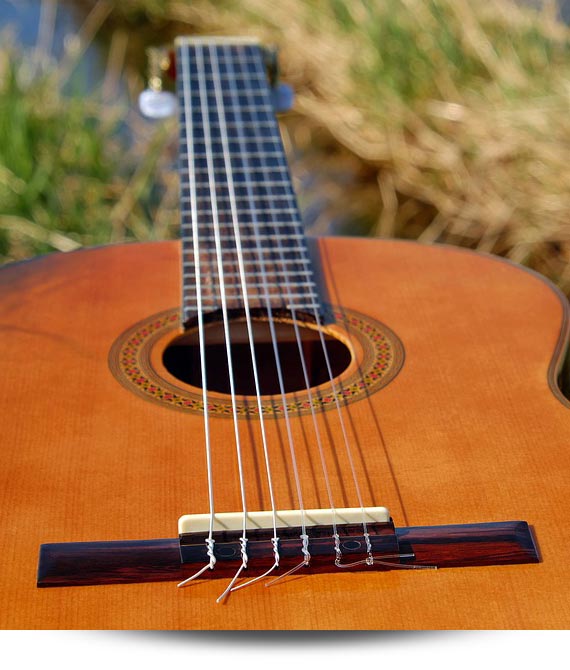
An open chord is a chord that has at least 1 or more open strings (or strings that are not fretted).
One of the most difficult things when you first start playing guitar is learning how to change chords quickly. It’s also very important that the fretting hand doesn’t mute the other strings. When you first place your fingers on the right strings, be sure to slowly play each of the strings individually to make sure each string rings out correctly.
-There are 3 main chord categories: Major, Minor, and Dominant 7th chords
Dominant 7th chords are major chords with the added minor 7th note. These chords are commonly used in blues music. These are some of the basic chords you can use to play literally hundreds of popular songs.
Open Major Chords: E, A, D, G and C
Here is a graphic of the 8 basic chords:
E Chord
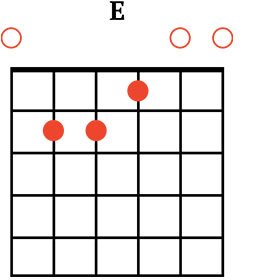
A Chord
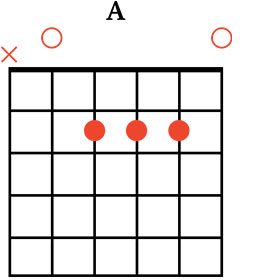
D Chord
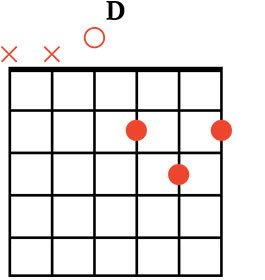
G Chord
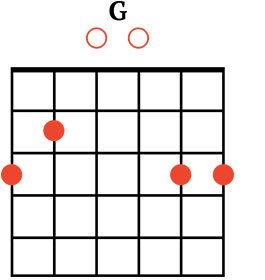
C Chord
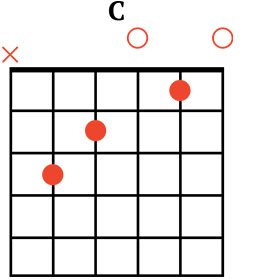
Em Chord
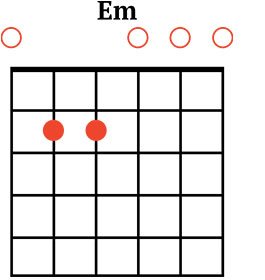
Am Chord
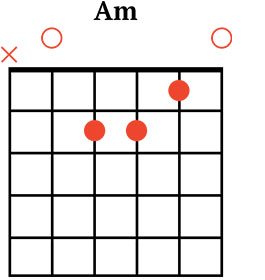
Dm Chord
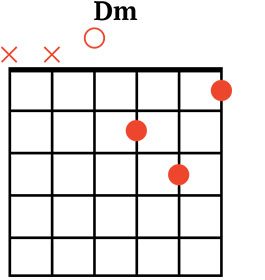
E7 Chord
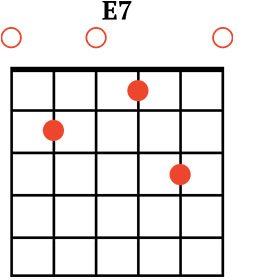
A7 Chord
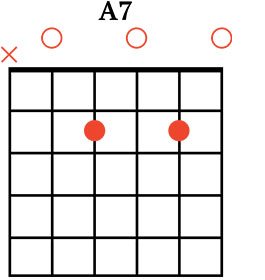
D7 Chord
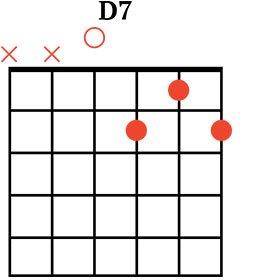
B7 Chord
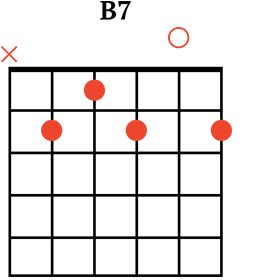
G7 Chord
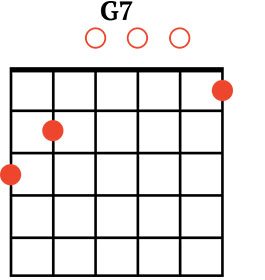
C7 Chord
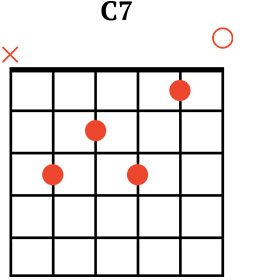
Check out this video lesson on basic chords:
Learning Barre Chords
Bar (barre chords) are some of the most difficult chords to play for any beginner. A barre chord requires one or more fingers to press down multiple strings vertically across the fretboard. This requires strength and can be hard to accomplish for someone learning how to play guitar.
There are so many barre chords that it exceeds the scope of this lesson, but exploring barre chords is a good idea. Barre chords are moveable and change chord names without requiring the player to change the fingering. This allows you to learn many chords with one barre chord shape, so the idea is to learn the basic majors, minors, and dominant 7th barre shapes.
Bar chords can categorized in 2 chord shapes. These are six string shapes and five string shapes, depending on whether the root note (main note of the chord) is on the 6th or 5th string.
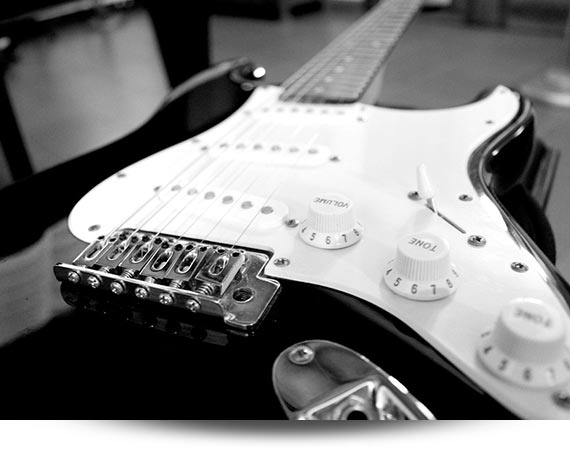
6 Strings Barre Chord Shapes:
Major Shape

Minor Shape
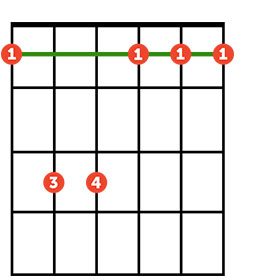
Dominant Shape
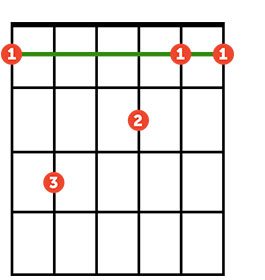
5 Strings Barre Chord Shapes:
Major Shape
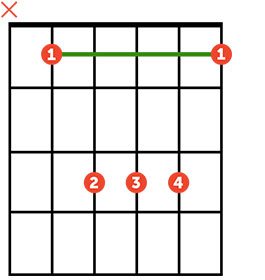
Minor Shape

Dominant Shape

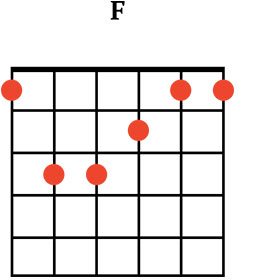
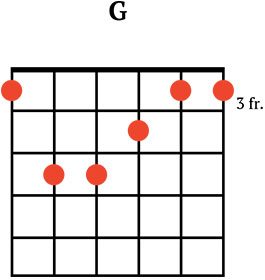
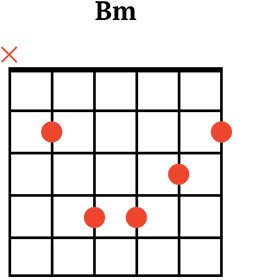
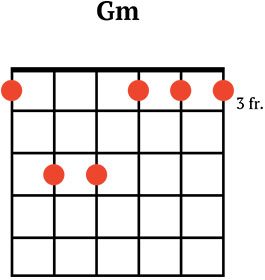
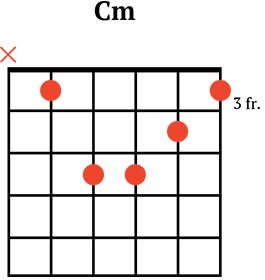


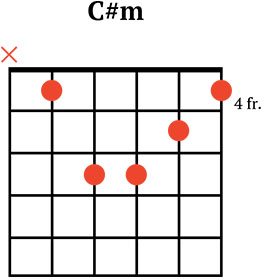
Easy Beginner Chord Progressions
In this section, we will put together some of the most basic chord progressions that are critical for beginners learning guitar. A chord progression is a series of chords that sound good together. Chord progressions are built on different degrees of a major scale and can be referred to by the position in the scale where a chord can be constructed.
Progression 1:
This one is one of the most basic and useful chord progressions. We can find them in literally thousands and thousands of songs.
//:G /C ://
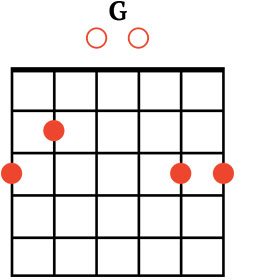
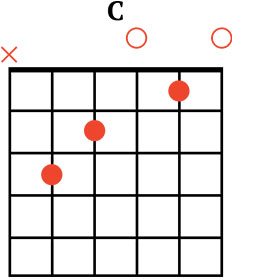
Progression 2:
This is the same progression than the first one but in A.
//:A /D ://
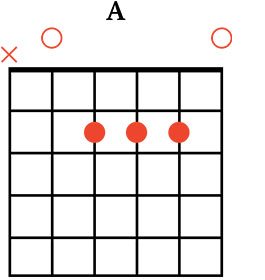
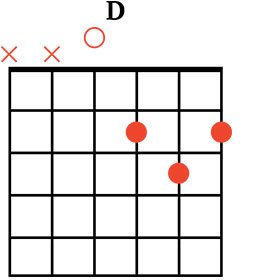
Progression 3:
Same idea but in minor mode. It is another common progression used in thousands of songs.
//:Am /Dm ://


Progression 4:
This is another “must know” chord progression. One of the most used progressions mixing up a minor chord with a major.
//:Em /C ://
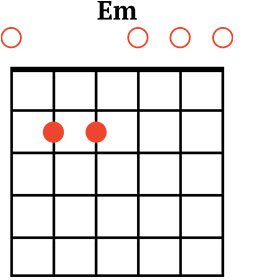
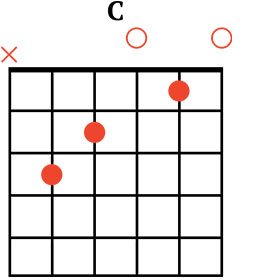
Progression 5:
This is the same idea of progression 3, but this one is in G minor.
//:Gm /Cm ://

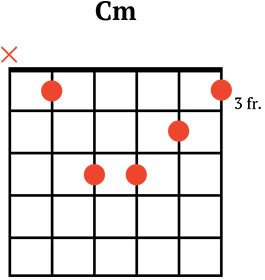
Progression 6:
This one is a bit more difficult since it has 3 chords. It´s in B minor and it is one of the most common chord progressions.
//:Bm /D /G ://

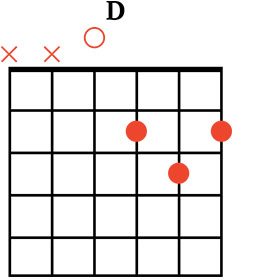

Progression 7:
This is the most simple and useful progression with 3 chords in the major mode. You could harmonized almost any melody with those 3 chords. These are the main progression of major blues.
//:F /Bb /C ://
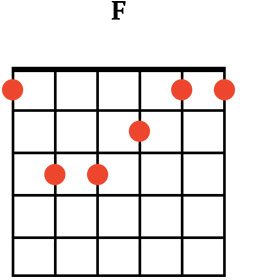

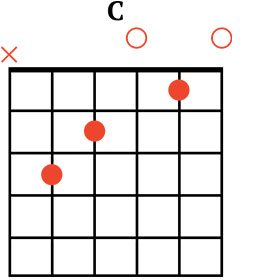
Progression 8:
This is the same idea as the previous progression but in minor mode. This one is also a very common progression of minor blues.
//:Am /Dm /Em ://
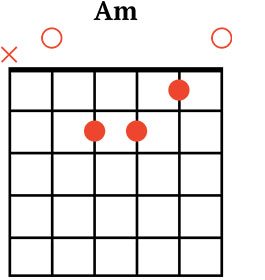

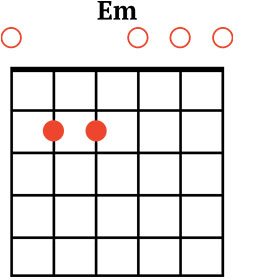
Progression 9:
This is another “must know” chord progression. Thousands of songs use this progression, including heavy metal bands such as Iron Maiden, etc.
//:Am /F /G ://

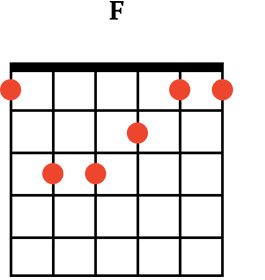

Progression 10:
This is another “must know” chord progression. Thousands of songs use this progression, including heavy metal bands such as Iron Maiden, etc.
//:Am /F /G ://
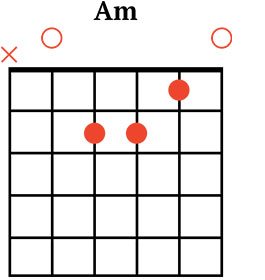
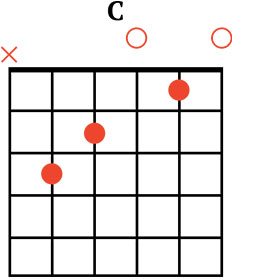
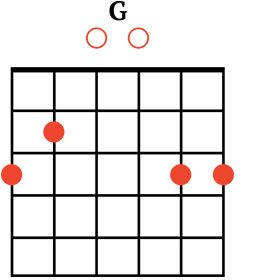
Once we have our basic open chords down, the next step is learning how to strum. Learning to combine your chords with basic strum patterns for guitar is how you begin learning how to play all of your favorite songs on guitar. This is an important part of learning how to play a guitar for beginners. For strumming I recommend to use a pick, but if you don’t have one, you can use your thumb and index finger.
Check out this cool lesson on basic strumming:
How to Learn Guitar for Beginners: The First Songs
some of my favourite ones…
Check it out and have fun!
1st Song: Knocking on Heavens Door
//G D /Am //
//:G D /C ://
Check out this video lesson with Jimmy Dillon teaching this Bob Dylan classic
2nd Song: Don’t Cry
This is a popular song from the 90s by Guns N Roses. This one is a bit more difficult
since it has 2 chord per bar on both bars.
Start it very very slow at first…
//:Am Dm /G C ://
3rd Song: Somebody That I Used to Know
This is a cool song from Gotye. Pretty easy since it has just 3 chords. The most difficult thing here is to get the speed of the changes.
//:Dm C /Dm C ://
//:Dm C /Bb C ://
4th Song: All Along The Watchtower
Pretty easy song, with the same 4 chords goes throughout the whole song.
//:C#m B /A B ://
Check out this video lesson from Jimmy Dillon on this classic song
This is a classic 4 chord song from the early 60s, written by by Ben E. King, Jerry Leiber and Mike Stoller.o know that we will have numbers fo
//:G /G /Em /Em /
C /D /G /G ://
Check out this video lesson with Jimmy Dillon teaching this famous classic:
Finger Exercises
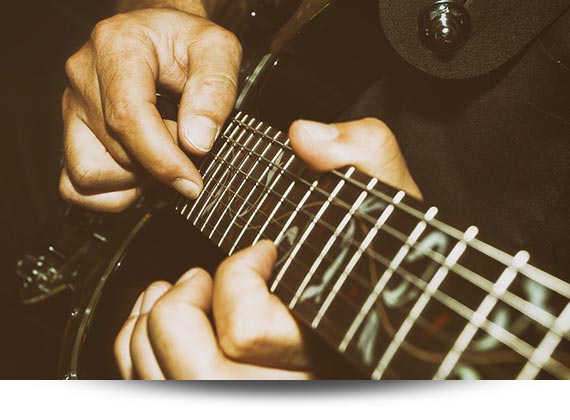
It´s really important to start moving our fingers since it will help get our chord changes faster, smoother, and more accurate. Scales also help with ear training and help us play more advanced guitar pieces.
There ere are tons of exercises, but there are a few you want to start practicing. These are called synchronisms. Before I explain these exercises, it’s important to know that we will have numbers for our fretting hand. Check out this image:
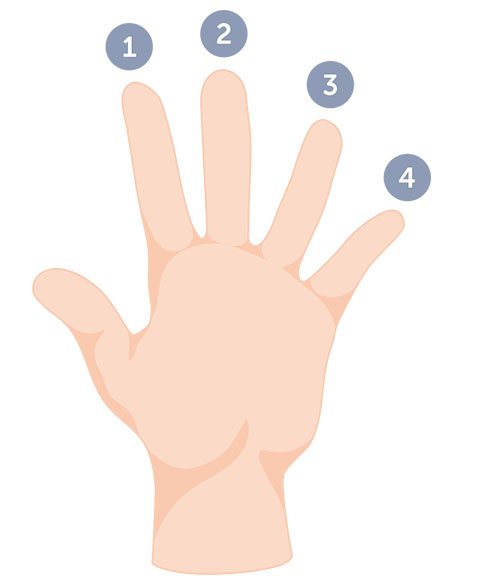
The idea is to apply different combinations of fingers to go from the 6th string (low E) to the 1st one (high E). Be sure to start each exercise from the first fret and when you arrive at the 1st string, start again from 2nd fret and go on like that until 12th fret.
1st Exercise: Fingers 1 and 2
2nd Exercise: Fingers 2 and 3
3rd Exercise: Fingers 3 and 4
4th Exercise: Fingers 1 and 3
5th Exercise: Fingers 2 and 4
6th Exercise: Fingers 1 and 4
8th Exercise: Fingers 2, 3 and 4
9th Exercise: Fingers 1, 2 and 4
10th Exercise: Fingers 1, 3 and 4
11th Exercise: Fingers 1, 2, 3 and 4
12th Exercise: Fingers 1, 3, 2 and 4
Easy Guitar Scales
In this chapter, we will learn the most basic and useful scale for any beginner guitar player. That scale is the pentatonic scale. As the name indicates, the pentatonic scale has 5 notes. While it may be a simple guitar scale for beginners to learn, it is a useful and versatile guitar scale. That can be used in any kind of musical context.
We won´t go deep theoretically since this lesson is for the beginner guitarist. Let’s just learn how to play the pentatonic scale on guitar. Since this scale has 5 notes, we will have 5 different scale shapes, which includes one scale shape starting from each note of the scale.

A minor pentatonic scale has these notes: A, C, D, E, G
Getting the major pentatonic is quite simple. If we play the scale from the 2nd note, we will have the C major pentatonic scale. so:
C major pentatonic scale has these notes: C, D, E, G, A
So let´s see all these shapes in the key of A minor: (the black circle is the root note)

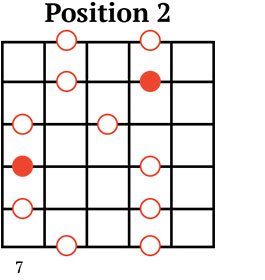
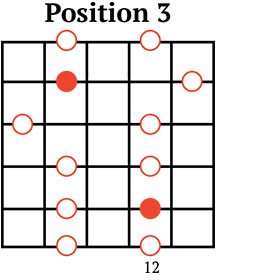
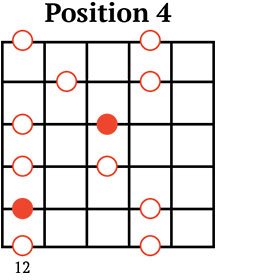
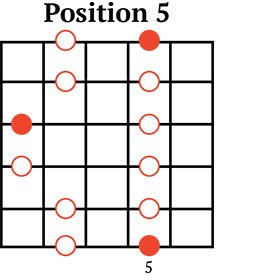
Easy Beginner Guitar Licks
Once we have our pentatonic scales down, the next step is learning some really easy licks which you can throw into any guitar solo.
I recommend you to try some of these next licks over a blues context.
Ok, before starting out with the licks, click here if you don’t know how to read tabs:
Lick 1: This is a basic 2 string pentatonic lick which ends with a full tone bend. Bending is one of the most important techniques for soloing. The most difficult thing is to bend the note to the right tone. We can have quarter bends, half, full tone, 1 tone and a half, 2 tones, and possibly even more, although you would risk breaking the strings.
Bending is more common is blues soloing.
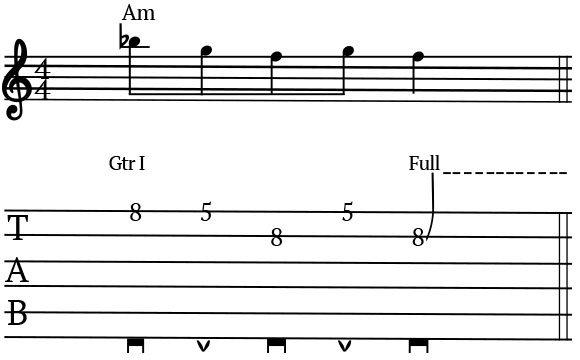
Lick 2: An even easier lick which starts with a triple rhythm. That means that we will have 3 notes in the first beat. The last note ends with vibrato. That’s one of the most important techniques for soloing and playing guitar in general. Vibrato is a continuous rhythmic bending of the string. Having great vibrato could take years and that’s one of the critical things that divides a pro from a beginner.
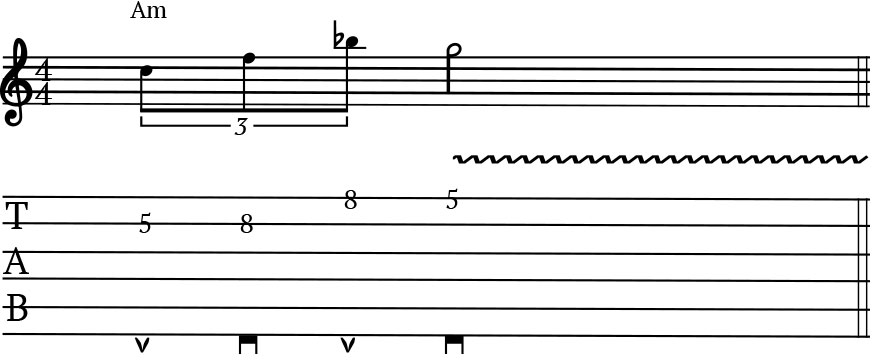
Lick 3: This is a similar idea but now we are using the 2nd and 3rd string.
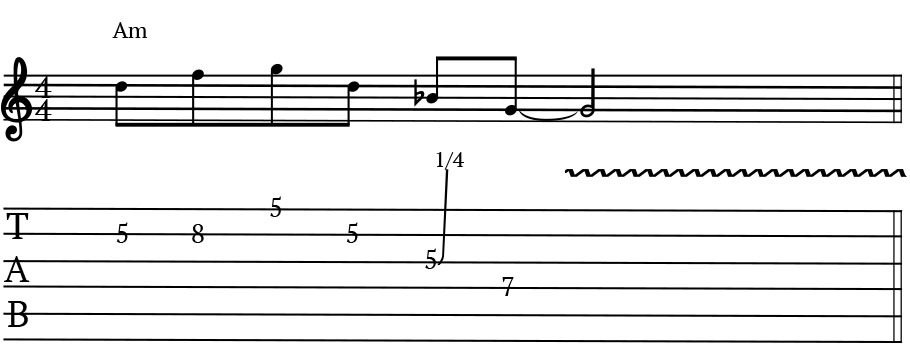
Lick 4: This is last lick. The cool thing about this one is that the last 4 notes are the notes of the A minor arpeggio. That means that we are playing the notes of the A minor chord. That´s something pretty common in lead guitar.
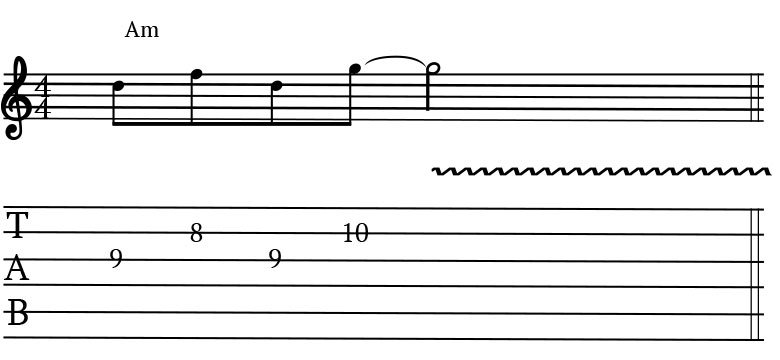
Learning Guitar for Beginners: Conclusion
That’s it for now. We’ve explored the basic fundamentals of learning guitar for beginners step by step. These guitar basics are everything you need to start playing guitar and to learn how to progress from beginning guitar to more advanced guitar playing.
With the knowledge you’ve gained here, you have the foundation you need for learning how to play guitar for beginners. These basics of playing guitar are all you need for beginning guitar. You can take the guitar lessons you’ve learned here and begin expanding on the concepts to improve your guitar playing dramatically. If you feel you need to review the material, be sure to do it before you try progressing to more advanced guitar playing concepts.
Remember, it takes patience and work to learn to play guitar for beginners, but the fundamentals of guitar laid out in this lesson will provide you with all the skills needed to improve your guitar playing.